After stumbling through a dry January and wondering if there would be fresh snow to make our Level 1 Avalanche course at the Pass more enjoyable, February arrived with cooler temperatures and a healthy dose of fresh powder. Needless to say, the stoke level was high as our crew headed out to the Pass for a couple of days of field work after wrapping up the classroom sessions earlier in the week.
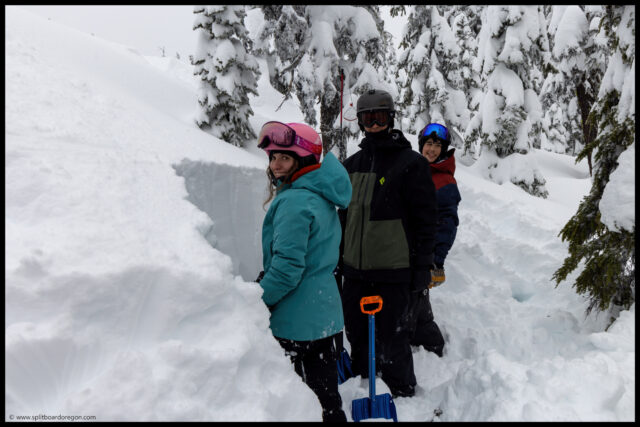
After spending a few hours to put the final touches on the field days, we divided our rather large class of 23 folks up into two groups for the morning session on day one. Everyone was boot ready in the lodge at 8:00 am, and soon we hopped on the lift to head to the top of the mountain for some work with beacons, probing, shoveling and snow pit analysis.
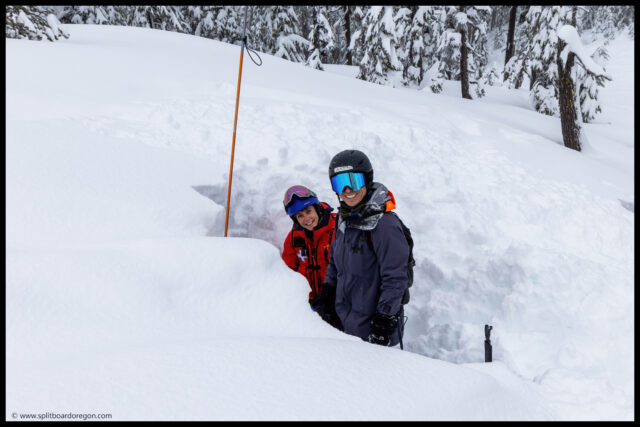
Brian and Laurie led group one with small group rescue in the traditional spot near the Kris Kross closure, and I headed down to Lighthouse Knob with John Fischer and Jon Marshall to do some snowpit tests and observations.
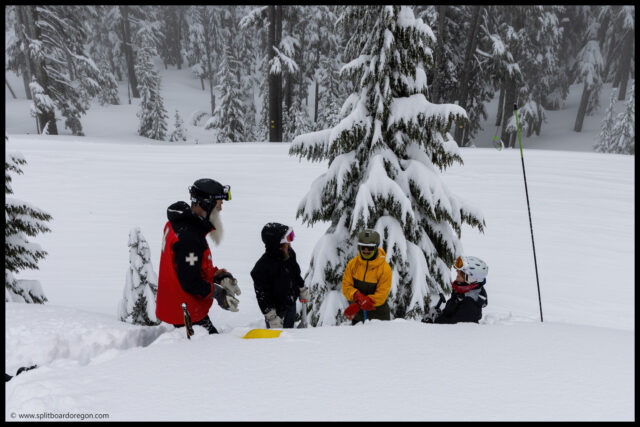
After leading a discussion on the various stability tests, we dug a test pit for the students and then they dug their own pits. Everyone performed extended column tests and several of us also did the propagation saw test. Interestingly, most of the ECT tests were negative (no results) although a few results were in the range of ECTP25-28. The PST results, however, were mostly positive. Given all the new snow, the weak layer was 30-40 inches down, which appeared to be accounting for some of the variable results.

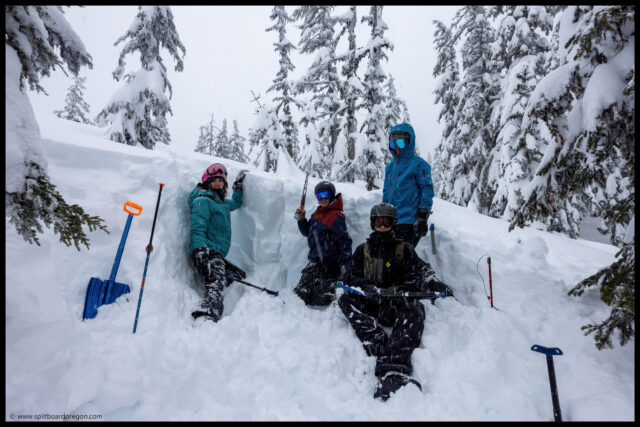
The weak layer was a crust sitting on top of a fairly large amount of depth hoar, something we traditionally don’t see in the Oregon cascades. It was a good experience for the students and also fun to be able to look at the crystals and see the facets.
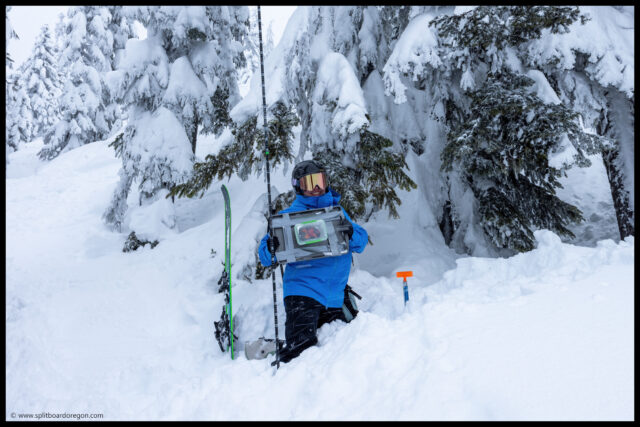
Once the first round of rotations were complete, we switched groups and did the same work again. Once that was complete, that brought us to an hour or so of small group rescue. My team headed down to the bottom of RTS and did some work hiding and subsequently finding buried beacons. By 3:00 pm, the whole class gathered at the top of the Sleepy Headwall for an orientation on formal probing and probe lines. Laurie led that conversation and I snapped a few photos before we headed down to the top of Sleepy for some work with the probes.

The formal probing went well, and after a half an hour or so, the day was done and sweep was underway. Our crew headed down to the base to take part in the evening meeting, and also to collect all the patrol gear (beacons, shovels, probes, etc.) that were loaned out during the day.
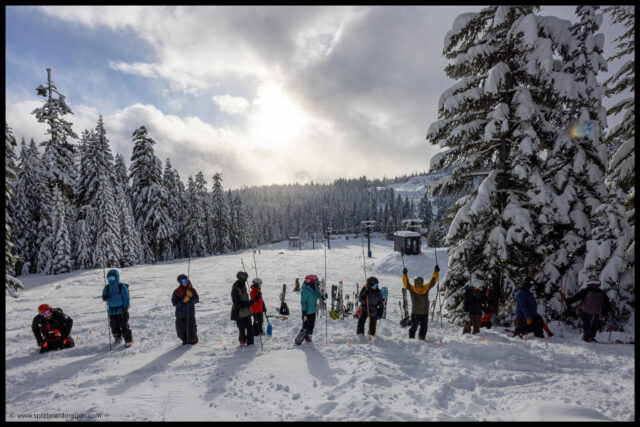
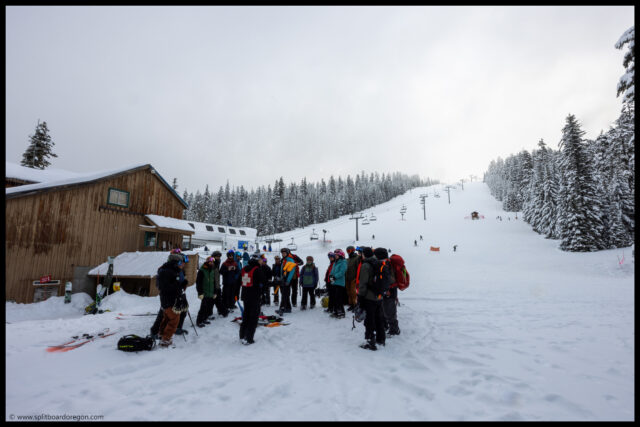
The evening finished with some good food and cold beverages in the patrol room, enjoyed in the company of other patrollers. After the evening wore on, Shaun and I headed down to Oakridge to stay with Brian and Shannon, who graciously offered to let us stay at their place. We enjoyed a tasty homemade mac and cheese that hit the spot, and later in the evening Brian and I went over the last details of the final scenario that would take place on Sunday afternoon.
The next morning we woke early, had a quick breakfast and a cup of coffee, and loaded into the car and headed up to the hill. Like the day before, we met early in the lodge, and the groups did some trip planning for their tours before heading to the top of EPA

After everyone was on the lift and ready to head out of the area, Brian and I set about getting the gear ready for our organized scenario later in the day that would test all the skills the students had learned throughout the course. It took a couple of trips to get all the gear to the top of EPA, and then we headed down to Peak 2 so we could bring it up to SDN where everything would be placed.
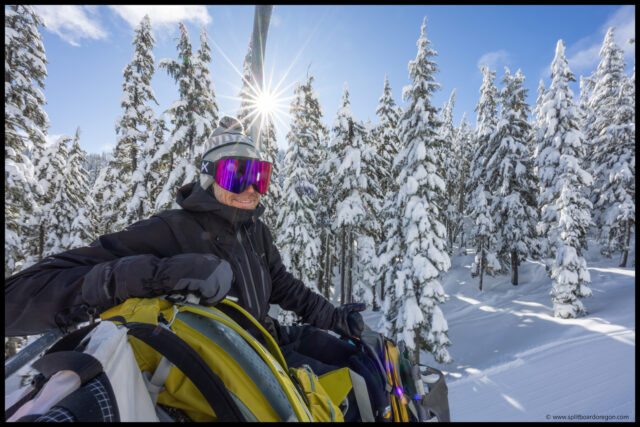
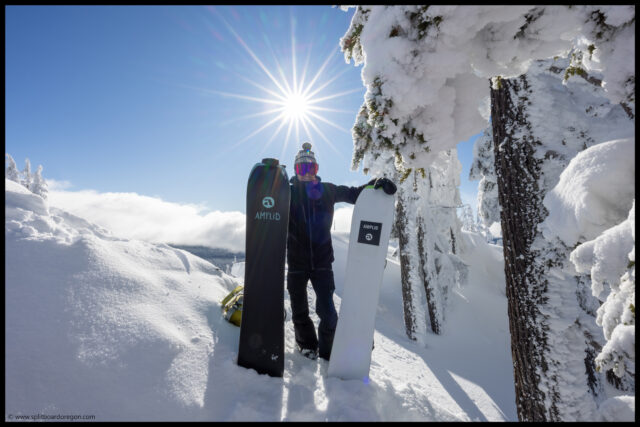
The next couple of hours were spent creating the avalanche, which is always a ton of work, but lots of fun. With the help of SPY (Obende and Adair), we dug out the crown face, the flanks, and then spent some time digging out the toe. Next, it was time to hide the targets, which included beacons as well as plywood placed strategically below clues. This year, we strategically placed some tasty beverages (both beers and sodas) below the targets, which would be enjoyed after the class.


By 1:00 pm, we had a pretty good looking avalanche scenario built and ready to go. Satisfied with our work, we headed back to the top of SDN about the same time as some of the tour groups were arriving back at the top of Peak 2.
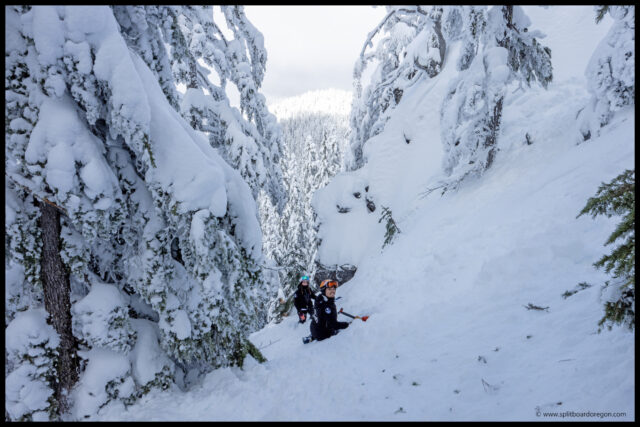
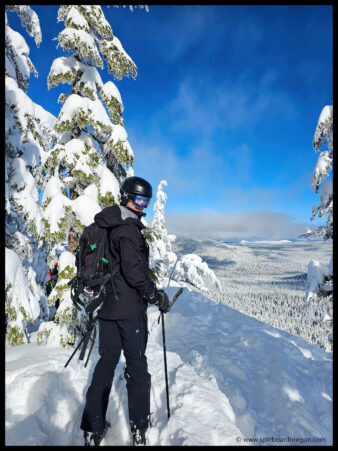
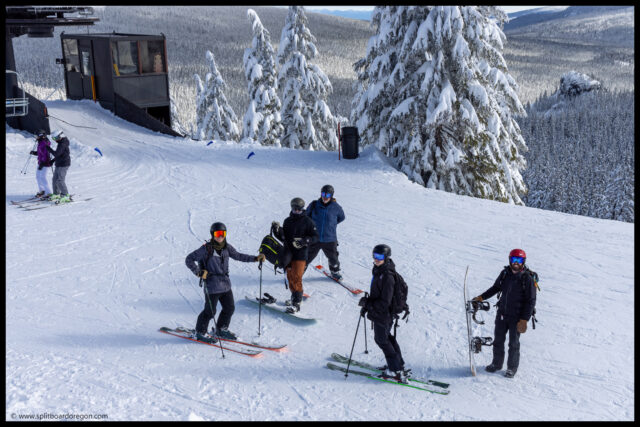
Since we were wearing coats, we headed down through SDN to get back to the base – one of the perks of teaching the class. If was the first time through the area for Obende, and he was pretty stoked by the time we got to the bottom of RTS.
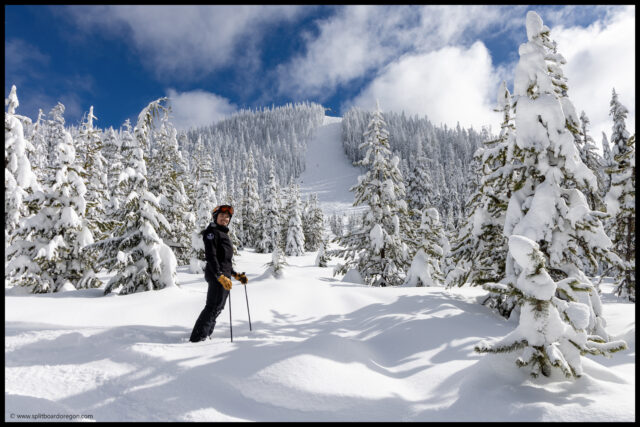
Once down at the base, we enjoyed a quick lunch and then headed back up to the top of Peak 2 for a 2:00 pm meetup with the rest of the class. This year, Amber was serving in the role as “hill chief” and Emily agreed to be in the lead role of “incident commander.” The two ladies did an awesome job of assigning the first response teams (beacons and spot probers), and soon the class started filtering into the scenario. Steve served as the patroller who met with the reporting party (me), so we were able to watch the scenario play out.
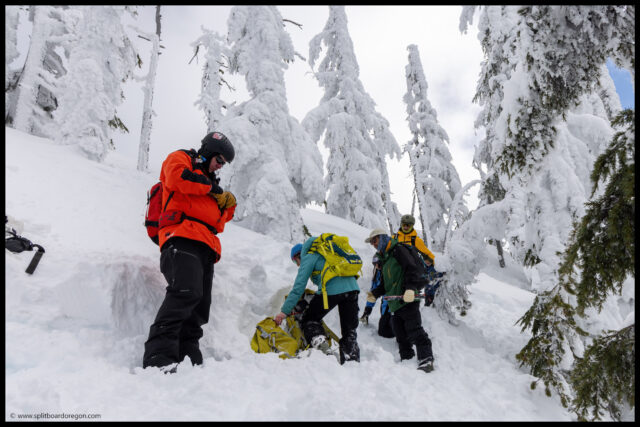
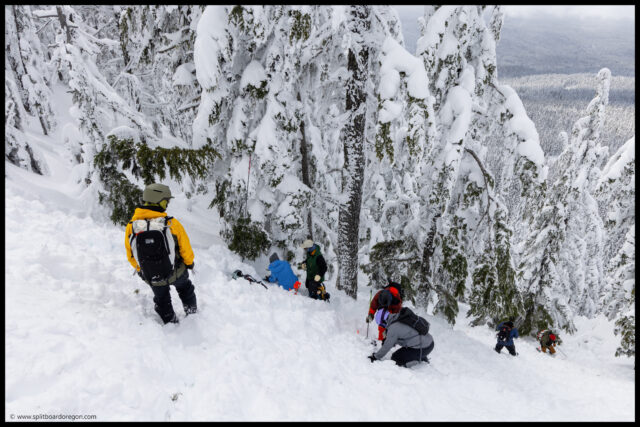
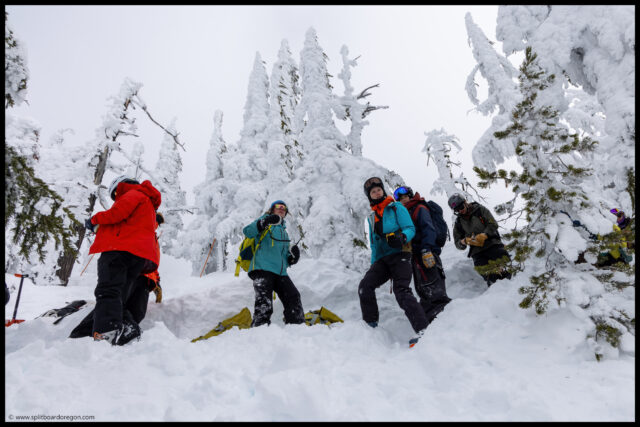

The beacon searchers made short work of finding the three buried beacons, and soon a few other “victims” were also found downhill of clues with concentrated spot probing. When there were only two targets/victims left to find, the group moved to an organized probe line that started at the toe.
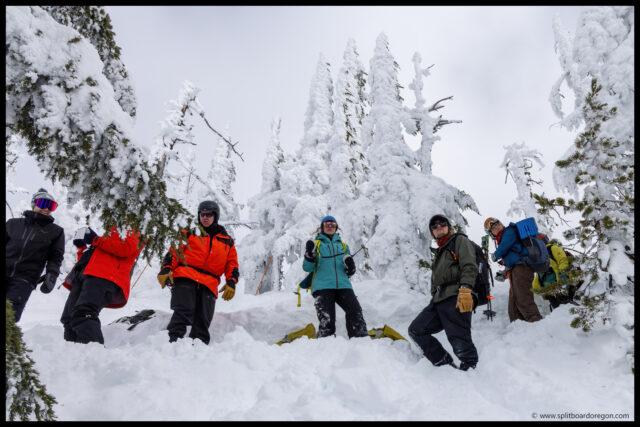
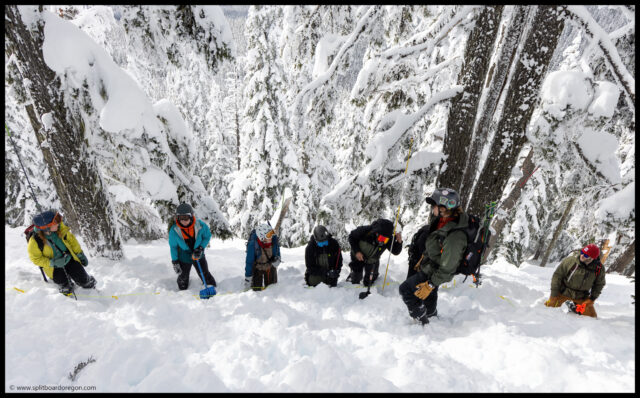
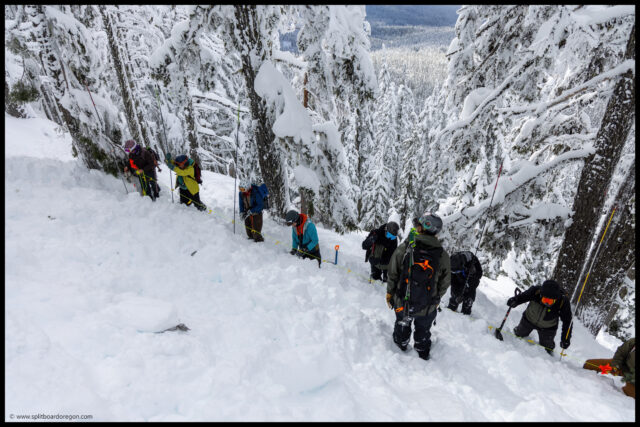
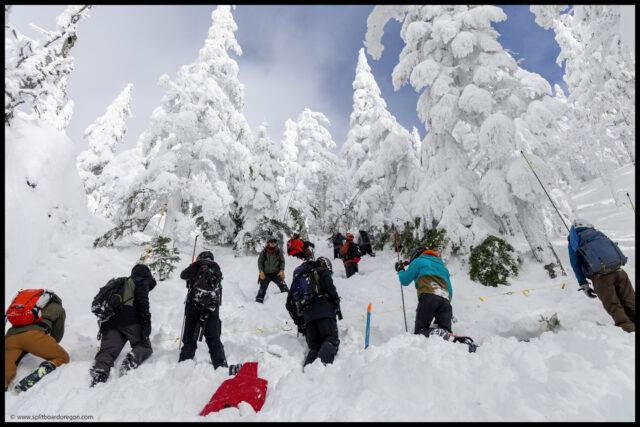
Eventually, all the targets were found, with the exception of one. After digging a hole that must have been about 10 x 10 feet, we determined that one of the SPY must have buried one of the plywood targets not in the area where we thought they put it.
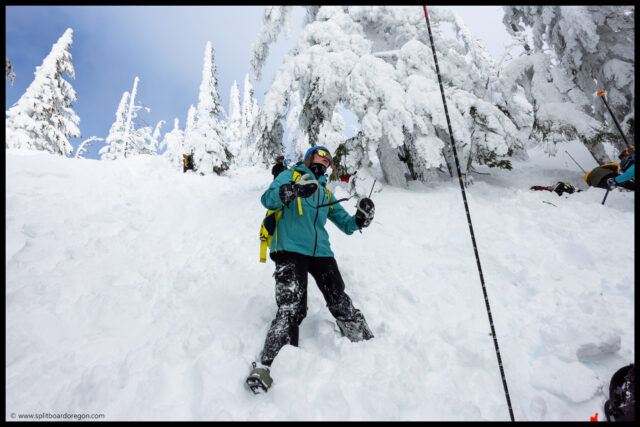
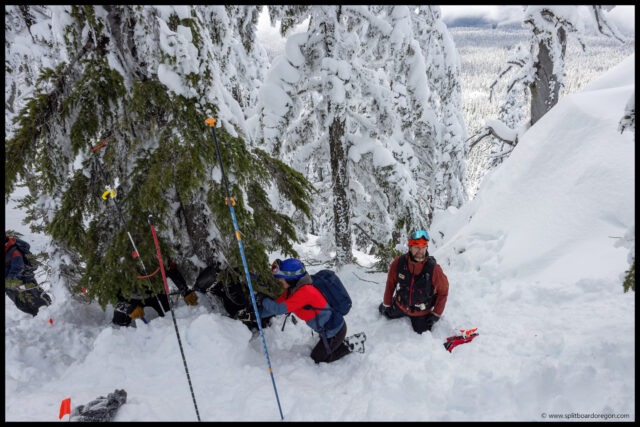
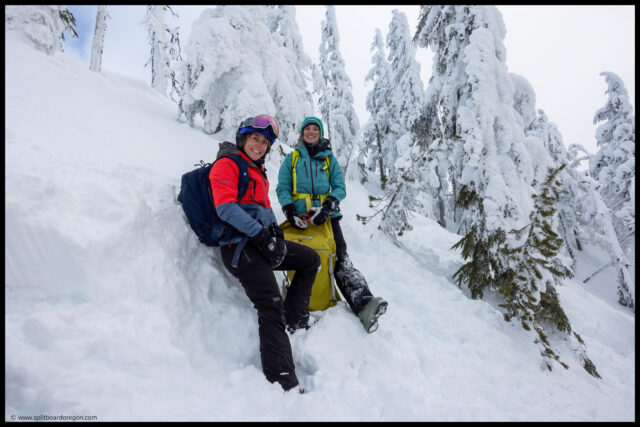
Once everyone was accounted for, we headed back to the top of Peak 2 and got a class photo after debriefing the scenario. This year’s class was quite large, but it was an awesome crew made up of patrollers, hosts, SPY, backcountry patrollers and area employees.
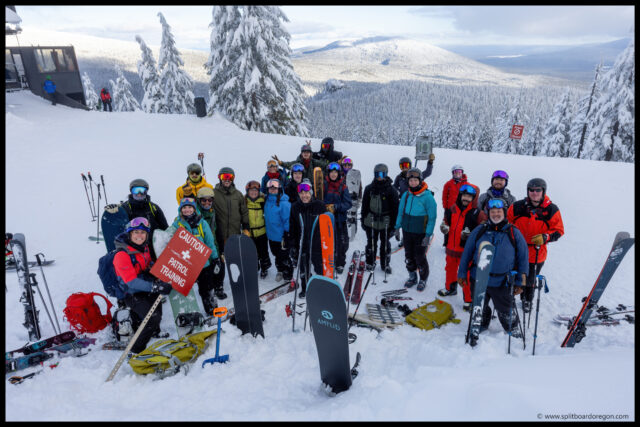
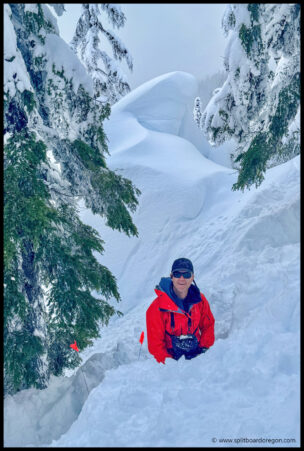
We finished the day off by skiing all the gear back down to the patrol room and making sure all the patrol avalanche gear was returned. Brian, Mark, Emily, Haley, Dan and I took the opportunity to ski down SDN, and I snapped a quick photo of the group at the bottom of RTS.
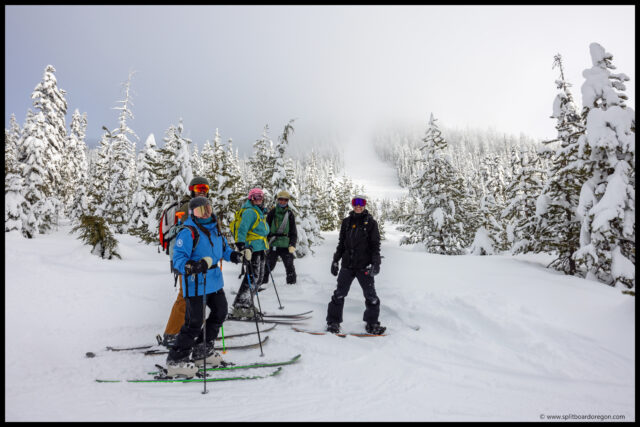
Sitting in the patrol room drinking one of the beers we’d hidden in the scenario, I was feeling pretty happy that the weekend was coming to a close. Planning the avalanche class is always a big lift, and I couldn’t do it without the awesome crew of instructors we have on patrol. This year was no exception, and this year’s course was a resounding success, that was capped off with great snow and field conditions. Here’s to hoping the next class we hold is just as successful!